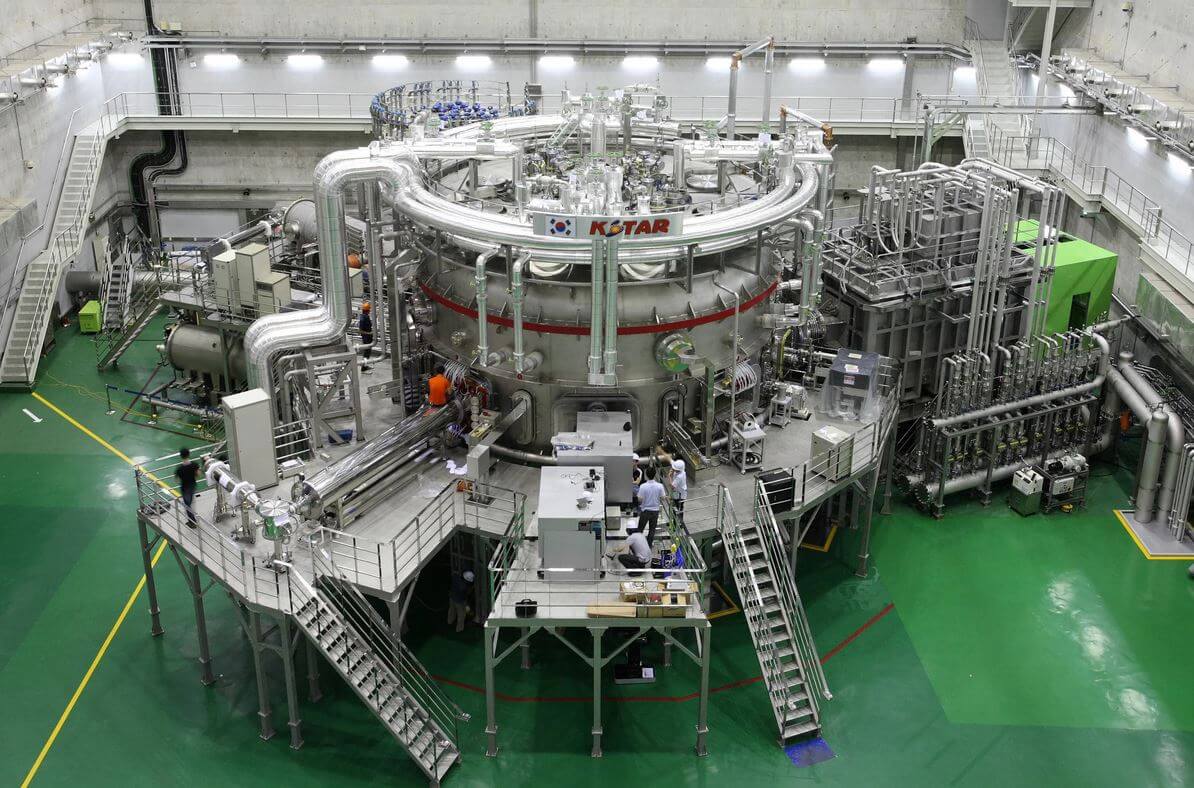Yong-Su Na at Seoul National University in South Korea and his colleagues managed an incredible performance that could bring about viable fusion power sooner than many expected.
The researchers managed to create a nuclear fusion reaction that lasted 30 seconds at temperatures in excess of 100 million°C.
According to New Scientist, while the duration and temperature alone aren’t records, it’s “the simultaneous achievement of heat and stability brings us a step closer to a viable fusion reactor – as long as the technique used can be scaled up.”
Their research, available on Nature.com, showed how, “thanks to abundant fast ions stabilizing the core plasma turbulence, we generate plasmas at a temperature of 100 million kelvin lasting up to 20 seconds without plasma edge instabilities or impurity accumulation” at the Korea Superconducting Tokamak Advanced Research device (KSTAR, pictured above).
Their research tackles one of the main challenges in building commercial fusion reactors but scientists still have to figure out how to withdraw heat from the reactor before it melts and how to turn that heat into electricity.
This experiment was shut after 30 seconds because of hardware limitations but, with upgrades, those temperatures could be sustained for longer in the future.
Follow TechTheLead on Google News to get the news first.























